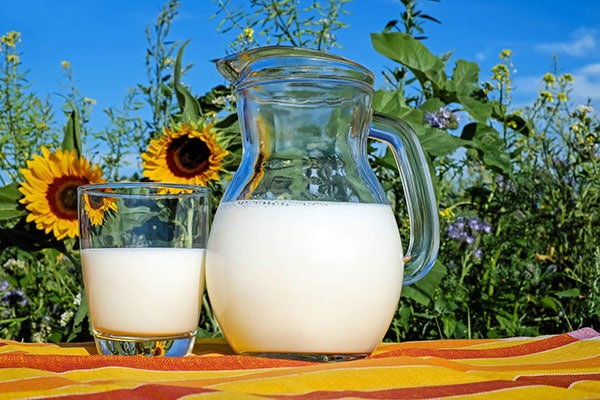Mastitis – briefly explained
Mastitis is one of the multi-factor diseases. Apart from genetic pre-disposition, milking and animal keeping hygiene, metabolism and thus feeding play a key role. All the stress factors like overcrowding, hierarchy, shed climate etc. ultimately lead to stress hormones and its effect on metabolism. Since right at the beginning of lactation there are heavy demands on metabolism, there are often problems in this regard.
Tips & tricks for better management
What should you take into account for dry cow management and feed increase management?
Special attention should be given to dry cow management and feed increase management. For a healthy rumen and a functioning immune system, the following things must be considered:
- Sufficient structure
- appropriate protein and energy supply
- balanced mineral supply
- smooth component change
With JOSERA DairyPilot, this exact stressful phase can be considerably improved with its stabilising effect on the rumen flora. Feeding mistakes with too less/too much energy or protein lead to ketosis, acidosis and liver damage even before calving.
Energy supply as an important factor
Energy supply plays an important role especially in case of new lactation. The milk production exceeds the feed intake capacity. In the catabolic metabolic condition, body fat burns. Due to this, the liver as the central metabolic organ is stressed to its limit. Since here even elements of the immune system and other metabolism regulators are formed, the immune system function declines.
Additional stress factors like birth, changing the stables, hierarchy and milking exacerbate the problem. If metabolism is derailed, it leads to ketosis and ultimately to fatty liver.
Adequate structure, tasty and high-quality (i.e. high energy density, high-quality protein, no butyric acid) basic forage with the use of biological silage additives, a balanced supply with rumen-soluble and small intestine-soluble energy ensure a good feed intake and therefore energy supply. Since the energy requirement can only be covered with large quantities of whole grain, there is always the danger of rumen acidosis because of the easily digestible carbohydrates.
In the high performance phase it is directed for the organism to have energy efficiency in order to avoid ketosis and fatty liver. This is achieved by using trace elements and vitamins in a balanced and adequate quantity, and by using organically bound trace elements with high availability. In this way, the cow can cut down on the energy consuming processes for converting or eliminating excess trace elements. Keragen Longlife® not only does support udder health with the liver relieving function but it also bolsters the local immune system with the direct effect on the skin quality and mucous membrane quality.
Calcium supply adjusted to the increasing milk yield must be taken into account. The function of the teat sphincter depends on calcium. An under-supply promotes the ingress of germs in the mammary gland.
In low ß Carotene rations, ß Carotene must be added to improve the body’s immune system. Otherwise a deficiency can result in the reduction of the number and function of immune cells.
Pay attention to the protein supply
The protein supply should also be adapted to the output. Too much protein stresses the liver with the energy-intensive detoxification of urea in the liver, which in turn has a negative effect on the immune system and increases the cell count and promotes mastitis. In addition, there is a risk that amino acids may get converted to biogenic amines. Biogenic amines are toxic and they not only affect the heart and circulatory function but also lead to vascular obliteration in the thinnest terminal branches of the arteries. The outcome is local circulatory problems with fatal consequences: Abortions and cow in heat after insemination, laminitis, and also mastitis, disorders of malabsorption of nutrients, etc. These biogenic amines can also occur in grass silages with delayed lowering of pH value.
Too less protein on the other hand allows the rumen flora to die, because it needs the nitrogen for its own reproduction. The consequence is not just reduced quantity of milk but even low energy supply. As a result of the decrease in the rumen flora, the feed is insufficiently digested.
For an optimal protein supply, a balanced ratio to energy is required as well as a complementary supply of protein available to the rumen and protein soluble in the small intestine.
As a farmer which hints should I observe during the milking process?
Analysing the milking process
This includes evaluating the behaviour of the animals during milking, the teat condition after milking, the milking duration and the milk out level
Less than 5% of the observed animals may
- defecate in the milking stall,
- step off the milking equipment or
- react with defensive movements.
Control the milk out level
A bad milk out level is when for more than 20% of the cows more than 4 full streams can be milked within 15 seconds.
Too high residual milking can lead to mastitis. The following could be the causes:
- inadequate stimulation
- low milk flow because of teat condition disorders
- wrong positioning of the milking equipment
- technical defects, wrong or too high milk flow limits and delay times
Please pay attention to the teats
Teat condition disorders can be acute or chronic.
After milking, the teat must be smooth, pink and dry. Swelling and discoloration of the teat directly after milking constitutes acute changes. Similarly, formation of rings and constrictions at the base of the teat, point-like bleeding in the skin or oedema. At the maximum 20% of the cows may have it.
Chronic changes relate to the mucous membrane of the teat canal. An ideal case is a smooth ring under supervision. Depending on the duration and severity of the chronic progression, the ring appears coarse to bulging thick. Slight changes may affect 20% of the animals at the maximum and at most 10% serious cases.
Teat condition disorders lead to a disturbed teat closure, and so germs can easily enter. In the rugged surface of a rough teat canal many germs can settle, which cannot be reached even with cleaning and disinfection. In addition, the milk out level reduces, the consequences are new infections.
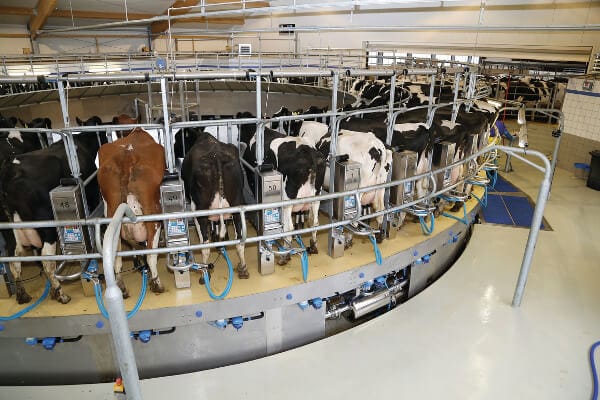
The causes for it can be:
- long milking duration,
- blind milking,
- Milk flow under 1kg/min.,
- too high vacuum,
- inadequate stimulation,
- The size of the teat rubber does not correspond to the teat size,
- over-aged teat rubbers,
- insufficient coordination of the pulsation of the teats.
Prevent new infections during milking
Here it is helpful to follow a milking sequence. Young animals and animals with healthy udders should be milked before infected animals. This is especially applicable if problem causing germs such as staphylococcus aureus and streptococcus agalactiae are present. If this is not possible, a careful interim cleaning/interim disinfection of the milking equipment must be done.
Even wearing gloves helps to lower the number of germs, because they cannot cling to the smooth surface as easily as they can on the skin. In case of contagious pathogens (dry period) they must be cleaned before every cow in a mild disinfectant solution.
Using a pre teat cup prevents pathogenic milk from getting sprayed on the milking stand floor or on the animal’s leg. In addition, a dry udder cleaning with the one-cow-one-cloth method reduces the risk of infection.
When attaching the milking equipment, double buckling the short milk hose prevents the entry of air and thus vacuum fluctuations and back-spray effects. Finally, an effective teat disinfection safeguards the previous efforts.
Product recommendation!
JOSERA NutriBiotic supports the natural darm health with it’s ingredients and provides a better darm integrity. Through a strengthened darm function th animals get a better immune defense and accompanying a better animal and udder health.
Treatment and remedial concepts: as a farmer what can I do?
At the beginning of the remedy it must be decided which cows with untreatable mastitis must be culled. These cows are pathogen reservoirs and increase the total germ load in the herd.
Incurable cows are those with a cell count of over 1 million and/or cell number for over 3 months above 700t and large nodular changes at the udder, and more than 2 previous treatments.
Of course, other health problems also play a role – foundation, fertility, performance etc.
Your key figure analysis shows a focus on new infections during the dry period (> 15%).
Here it is noted that cows with low cell count are in the dry period whereas those with high cell count start lactation. Review the dry period management in this case. Probably the cows will give much more milk in the dry period.
Due to the milk out the dry period does not become effective and then it must be treated. Often it is helpful to reduce the energy content in the ration to a milk yield of 15 kg milk approx. 2 weeks before dry period.
In addition, calves must be kept in the visible and hearing distance.
Please take care of hygiene during the application of the drying supplement or teat sealants and treat cows with increased cell count specifically before the drying period. In case of new infections during the dry period, it mostly involves environment-related germs. Hygienic and low-stress animal keeping are important here. With clean animal keeping conditions, adequate quantity and intervals of straw and less flies the germ load can be lowered. A simultaneous reduction of stress factors and adequate place for eating and lying down promotes their body’s own defence system. Here, a needs-based feeding of dry cows has a big influence. Especially, adequate treatment with vitamins and trace elements is important.
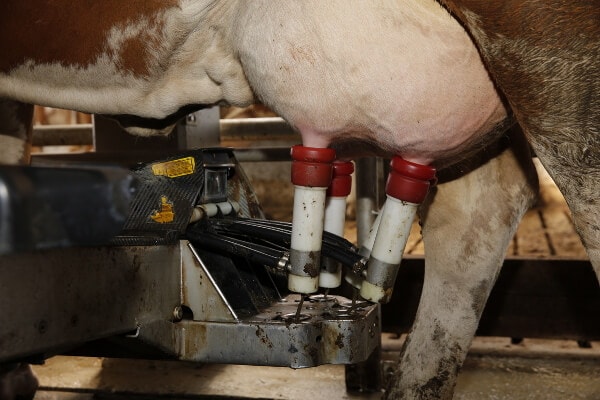
With regard to acute mastitis in early lactation caused by coliforme germs, a targeted increase in feed before calving is recommended. Especially rumen disorders (rumen acidosis) and ketosis play an important role in this phase as enablers for mastitis.
The correct physical condition for calving and good feed intake stabilise the cow. Here calcium supply to freshly lactating cows has an important function. It not only ensures good teat sealing but also ensures mobility. Walking to the feeding table and to milking is possible without problems and ensures good feed intake.
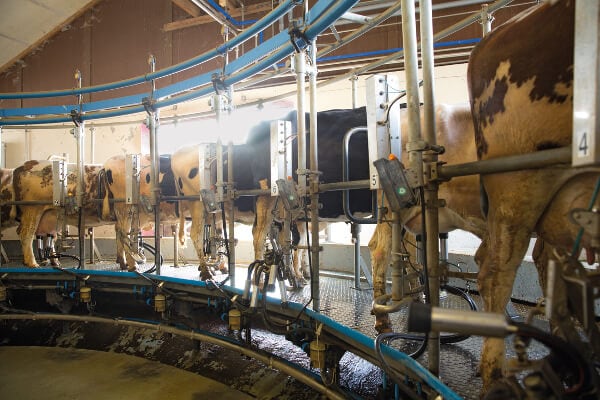
Your key figure analysis shows a focus on new infections during the lactation (above 21%).
If there are anomalies with concentration in individual months, then the causes must often be searched in the changes in the operation processes (change in personnel, old teat gloves) or in the introduction of other products (new silages, purchase of cows) in the area of milking, keeping and feeding.
Even with a very low share of udder-healthy cows in the herd (more than 50% of cows with over 100 000 cells/ml milk) the cause for the new infection must be searched. The entire milking process, milk out level, acute and chronic disturbances of teat condition and the milk duration must be critically analysed. Especially when cow-related pathogens or coagulase negative staphylococcal are found. For environment-related germs the weaknesses must be looked for in the animal keeping conditions. Even here hygienic holding of animals and regular cleaning of stables reduces the risk of infection. A needs-based feeding with perfect quality of feed ensures a strong immune system. Reviewing the ration often proves to be helpful. Infection sources can also be animals with chronically unhealthy udders.
Do you have too many cows with chronically unhealthy udders in your herd?
Chronic means over 2 months of cell count of above 200 000 in individual milking. At the maximum 10% of the cows may have it. The causes are mostly cow-related pathogens or coagulase negative staphylococcal. Here the milking process is in the forefront because these pathogens are mostly transferred in this process. In case of Stept. agalactiae, careful treatment with Penicillin is recommended. The remedy of Staphaureus is expensive and it is properly treated later on. If pathogens, coliform or coagulase negative germs are not found in the quarter milk tests, then treatment should not be done at first, rather the milking process, animal keeping, hygiene and feeding must be optimised.
Conclusion
High-quality feed and a well synchronised rumen are a pre-requisite for high feed intake. Abrupt change in feed, stress, nutrition imbalances, lack of water intake lead to the rumen bacteria dying and it provokes the formation of endotoxins, the effect of which is like biogenic amines.
Regularly determining the dry mass of the feed and correspondingly adjusting the high-performance feed and structure, evaluating the milk production data, evaluating the physical condition, faeces, rumination and rumen filling capacity are important management aids for optimisation of the udder health and performance of the herd.
Do you have questions about our products or are you looking for your contact person? Then just write to us, we would be happy to help.
You might be interested in the following contents:
JOSERA How does feed influence the milk ingredients?
Milk is still one of the world’s staple foods. The development of milk production in Germany reflects the enormous performance potential of herds on farms.
JOSERA DairyPilot – increase the milk yield of your herd
Is your operative goal to increase the performance of your herd? Or are the health and resilience of your herd important to you? Then read more about JOSERA DairyPilot!
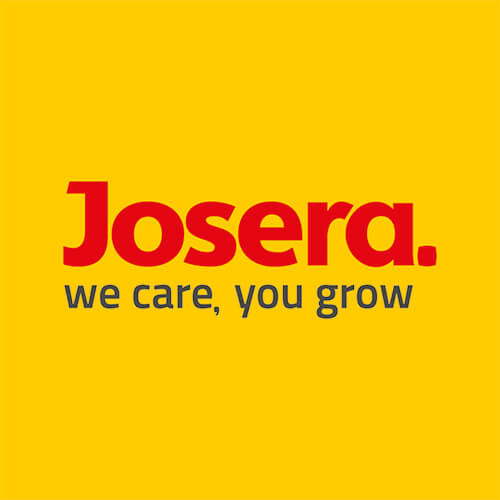





 (2 Votes, average: 5.00 von 5)
(2 Votes, average: 5.00 von 5)